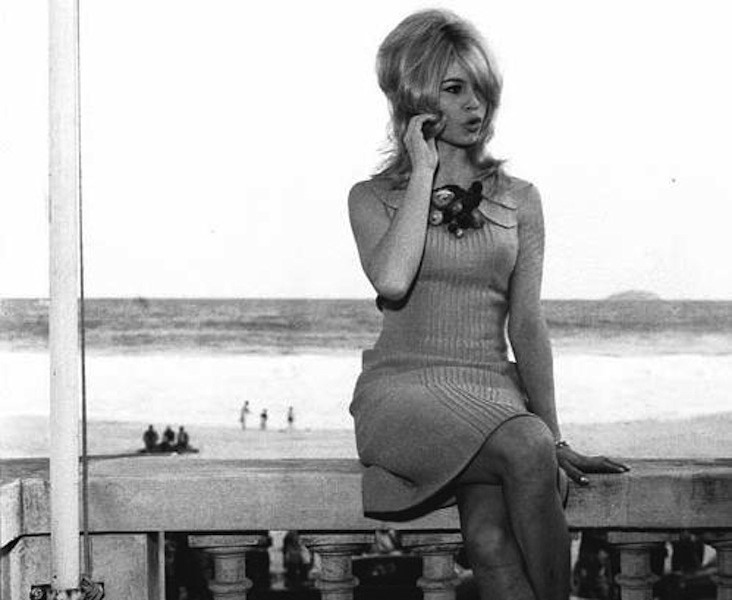Rio de Janeiro's beaches, Carnival and samba are all rightly famous, but nothing epitomises Brazilian glamour like the Copacabana Palace, Rio’s oldest luxury hotel...
Rio de Janeiro’s beaches, Carnival and samba are all rightly famous, but nothing epitomises Brazilian glamour like the Copacabana Palace, Rio’s oldest luxury hotel. Affectionately dubbed “the Copa” by Carioca’s and guests alike, the hotel has played host to many 20th century greats, including Ava Gardener, Marlene Dietrich, Brigitte Bardot, and Albert Einstein along with numerous royals and heads of state.
Built in 1923 by Brazilian hotelier Octavio Guinle on the suggestion of the Brazilian president, the Copacabana Palace was modelled on two prominent French hotels of the day, in keeping with Brazil’s European aspirations. But it wasn’t until the 1933 film Flying Down to Rio (Fred Astair and Ginger Rogers’s first film together) that the world discovered the inimitable Copacabana beach. In 1942, Orson Welles stayed at the hotel for 8 months while filming a documentary about Rio, until the studio shut down production, nervous of his increasing eccentricities. Welles spent much of his time womanising and boozing and famously went berserk when his girlfriend, Mexican actress Dolores Del Rio, called to break up with him. He proceeded to throw the contents of his suite into the pool 6 stories down, including the piano.
"Nothing epitomises Brazilian glamour like the Copacabana Palace..."
Then there was the infamous Cafajestes “school of scoundrels”, a group of “well-bred” young men who met at the hotel’s swimming pool and were behind many outrageous events in Rio. In 1949 they caused a huge furore by protesting against a new rule by the Chief of Police demanding that beach visitors cover up – the men marched along the beach wearing top hats and tails, declaring they would “give their bodies for sartorial liberation” and were accompanied by prostitutes wearing bikinis and open fur coats.
One of the most iconic pictures of Brigitte Bardot was taken in the Copa, when the starlet came to Rio in 1964. Immediately upon arriving at the airport, Bardot was besieged by the paparazzi, causing her to rush off and disappear into hiding at a friend's house, while leaving all of her luggage behind in the process. Still unable to escape the waiting photographers, Bardot announced she would cancel her Brazilian tour, another failed attempt to ward off attention. Finally Bardot held a press conference at the Copa, where she begrudgingly agreed to be photographed before telling the waiting press, “Let it be agreed you will respect my freedom, cease following me and leave me be.” Finally getting the peace she craved, Bardot then left Rio for Buzios, the idyllic Brazilian coastal town that became her new favourite South American haunt.
"With Brazil playing an increasingly central role in global fashion, culture and business, the Copacabana Palace manages to combine a lasting old world elegance with an exciting sense of what Rio has to offer in the 21st century"
In more recent times, the Copacabana Palace has hosted everyone from Nelson Mandela to Frances Ford Coppola, as well as a visit from Princess Diana and Prince Charles (during which she reportedly refused to sleep with him and took a dip in the pool at two in the morning by herself) as well as the infamous encounter that resulted in Mick Jagger’s lovechild.
But the Copa is far more than just a rich source of gossip. The lavish hotel still evokes the grandeur of the early 20th century at its finest, from the elegant rooms and suites to the legendary ground level pool and views of the beach. Yearly highlights at the hotel are the extravagant themed Carnival balls in February as well as the New Years Eve celebrations, when millions of Cariocas flock to Copacabana beach wearing white and carrying flowers to leave in the ocean for sea goddess Iemanjá. With Brazil playing an increasingly central role in global fashion, culture and business, the Copacabana Palace manages to combine a lasting old world elegance with an exciting sense of what Rio has to offer in the 21st century.
Text by Karen Orton
Karen Orton is the Staff Writer at Dazed & Confused.
